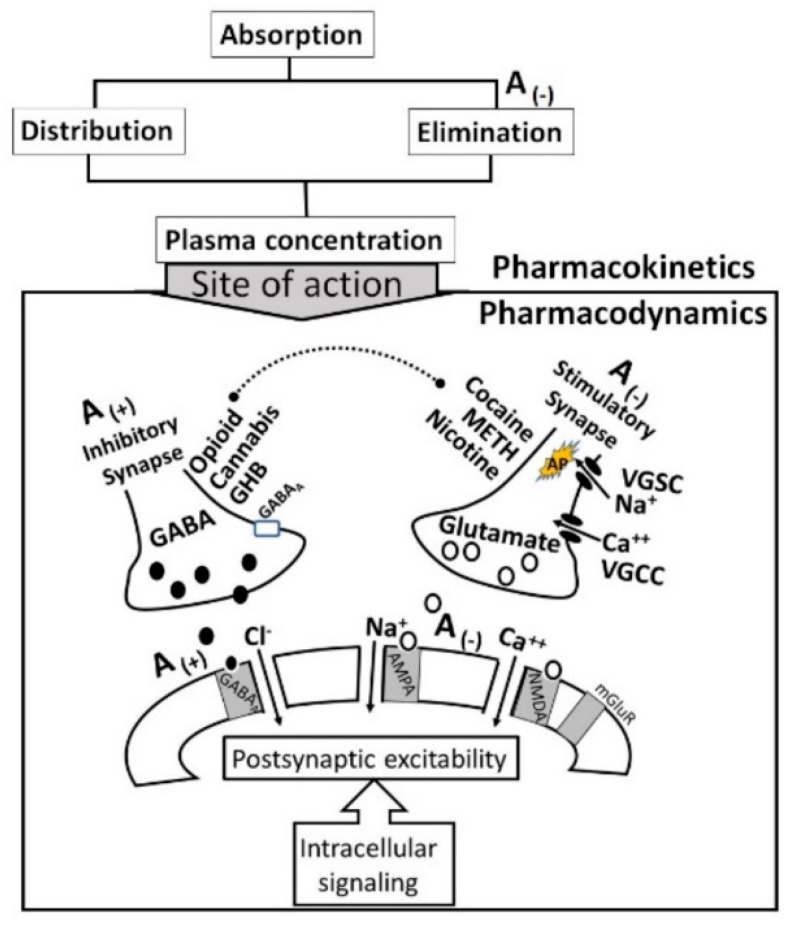Figure 21.
Proposed mechanisms underlying alcohol’s interaction with co-abused drugs. Alcohol (referred as alcohol in this article) is rapidly absorbed and distributed. It is metabolized to acetaldehyde by ADH and CYP enzymes, then to acetate by ALDH. In this process, alcohol competes with the co-administered drugs and suppresses their elimination, thus increasing the drug’s plasma concentration and altering its pharmacokinetics (increase in Cmax and AUC, decrease in CL). Chronic alcohol exposure activates the liver CYP enzymes, resulting in a decrease in the drug’s plasma concentrations, with a decrease in its efficacy. Alcohol, in addition to altering pharmacokinetics of a drug, also alter its pharmacodynamics by activating GABAergic and OPergic presynaptic neurons (A(+), but inhibiting Gluergic presynaptic neurons (A(-)). Post-synoptically, alcohol activates GABAAR mediated influx of Cl− ions, but inhibits AMPAR-mediated Na+ ions and NMDAR-mediated Ca2+ ions, resulting in reduced excitability via IPSP. Therefore, alcohol may augment the effects of inhibitory drugs (opioids, cannabis and GHB) but suppress the effects of excitatory drugs (cocaine, METH or nicotine). Chronic alcohol exposure may have opposite effects not shown in this figure. Abbreviations: A(+): positive alcohol effects, A(−): negative alcohol effects, VGSE: voltage-gated sodium ion (Na+) channels that may be attenuated by alcohol’s IPSP, VGCC: voltage-gated calcium ion (Ca2+) channels that may be attenuated by alcohol’s IPSP, GABAAR mediated Cl− channels that may be additively/synergistically activated by alcohol’s IPSP, inhibitory neurotransmitters, excitatory. neurotransmitters,  action potential.
action potential.

